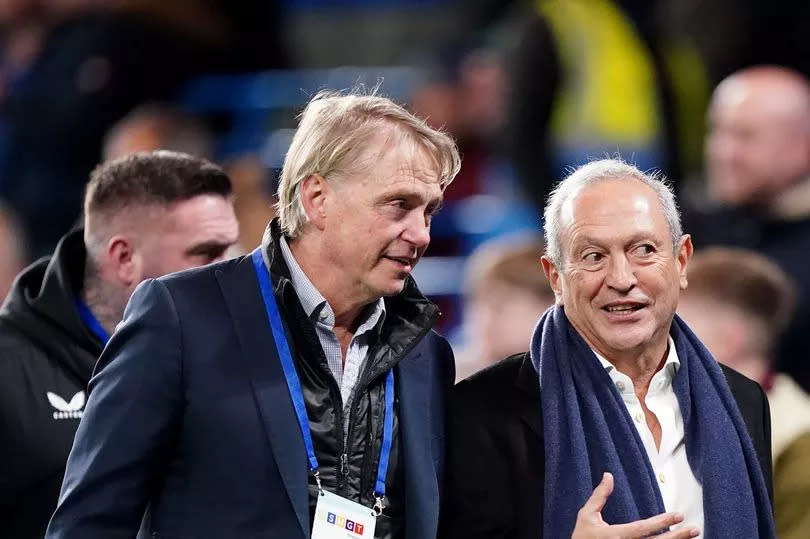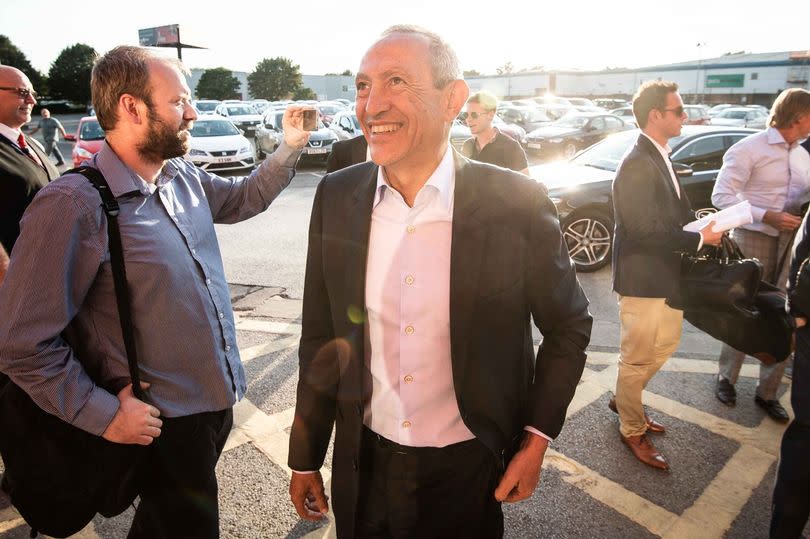Amortisation, pure profit and the FFP rules that temper Aston Villa transfer's ambition

Aston Villa are able to conduct transfer business from Friday, as the summer transfer window officially opens. As of tomorrow, recruitment around the UK can commence, while in parts of mainland Europe the wait to conduct transfers continues until the beginning of July. The market is often slow to being roused into activity - history tells us that summer recruitment drives tend to gradually grow busier well into August.
For Villa, it's a crucial summer. While other sides, particularly down the league pyramid, often have to rip up their squad and start again each window, Villa have an element of stability and a core to build around. All key players have long contracts and are tied down to the club for some time, meaning any suitors will have to pay top dollar to prise them away.
No senior players left the club this summer. Calum Chambers and Kortney Hause are out of contract next summer and Villa are keen to move on Philippe Coutinho and Leander Dendoncker, but both of those players also have a couple of years remaining on their respective deals. Clearly, though, while Villa's summer ought to be one of excitement, they're having to tread carefully.
Gone are the days, sadly for the Lions, when a sugar daddy owner could swoop into a club and splash as much cash as they wanted. There'll never be another Roman Abramovich at Chelsea type scenario while Financial Fair Play and Profitability and Sustainability are rules within which clubs must comply. For Villa, Nassef Sawiris and Wes Edens didn't arrive a moment too soon when they landed in 2018, but they're a generation behind what might've been.
READ | Douglas Luiz to Juventus transfer update as 'says yes' claim emerges
READ | Chris Heck has his say on Nassef Sawiris' FFP fury and makes £400m Aston Villa prediction
The fact that there is a 'need' for Villa to sell is quite preposterous, when you think about it; they're a incredibly stable club, thanks to the financial backing of their incredibly wealthy owners. They're highly ambitious and have employed people in senior roles - none more notably than Unai Emery himself - to carry out the job required. They're entering the market on the back of the club's most successful season in recent history.
Yet Villa must raise money so as not to be found in breach of the rules, rules which an increasing number of clubs are falling foul of. You have Everton, Nottingham Forest, Leicester City and Sheffield United who are all recent case studies of sides who have either been justifiably penalised for breaking rules or been found guilty of seemingly aspiring too high.
Financial Fair Play? There's nothing fair about having to sell academy generated products, 'pure profit' footballers who ought to be blooded in your first team to make your fanbase proud and feel represented, simply to stay within the frankly farcical regulations. Pure profit is a term you may see in relation to transfer dealings this summer and can be applied to Carney Chukwuemeka, Jaden Philogene, Aaron Ramsey and Cameron Archer.
For Villa now, it means Jacob Ramsey. For Chelsea, it means Conor Gallagher. It's a transfer - more often than not involving an academy, or 'homegrown' player - of which the fee is deemed to be entirely profit. When Villa sold Jack Grealish, they received (or are receiving) the full £100m owed to them when striking the deal. Grealish, as a Bodymoor heath product, was all Villa's and as a consequence they owed no money. Villa were in a win win situation.
If Villa sold Ramsey for £50m this summer, not only is it pure profit but it also would increase their turnover significantly and help their cause amid their PSR struggles no end. It gets a little more complicated when players are sold midway through their contracts, though, because of player amortisation.
That, in a nutshell, means you're paying the selling club your agreed fee over the course of said player's contract. If the player costs you £20m and you hand him a four-year deal, the receiving club can expect £5m from you each summer. One loophole Chelsea have tapped into is by giving players enormous contracts - Mykhailo Mudryk and Enzo Fernandez both signed eight and a half year contracts to help scatter the payments and keep in the rules.
In Chelsea's case specifically, that comes with its own risks. For a player to be on an eight-year deal, you better hope they don't pick up any serious injuries or fall out of favour with the manager - and they get through those like hotcakes at Stamford Bridge. Clubs like Chelsea, Arsenal, Manchester United and Liverpool have greater turnovers because of their global pull and so have more wriggle room than Villa at this moment.
If Villa sold Diego Carlos, as has been speculated, this summer, it'll be halfway through the four-year contract he signed when joining from Sevilla. The Brazilian cost £26m, of which £13m is still owed to Sevilla. Villa couldn't afford to sell Carlos for less than that sum.

League rules state that a club can make a maximum combined loss of £105m over a three-year period, provided that any sum above £15m and below £105m is guaranteed by the owners of the club. Clearly, for Villa with the cash rich NSWE at the helm, that was never going to be a problem. It's how it has been spent, though.
The numbers when the club's accounts were published were stark indeed. UEFA deemed Villa's losses to be the biggest in Europe, spending £194.2m on player wages. They made a pre-tax loss of £120m for the 2022-23 season alone, although revenue increased up to £217.7m.
Villa have mostly spent wisely - if not substantially - in recent years. Their squad is transformed. They were clever in the signings of Boubacar Kamara and Youri Tielemans on frees. They topped up their squad last summer with the loans of Clement Lenglet and Nicolo Zaniolo. They spent the Grealish money primarily on Emiliano Buendia and Leon Bailey. Douglas Luiz, Emi Martinez and Ollie Watkins have all proven to be terrific value for money.
Villa have, though, got it occasionally wrong, and for that they're now having to be clever, and make decisions they perhaps wouldn't want to - like sell Luiz, who'll fetch good money from Juventus, but who in another scenario they'd be happily planning to accommodate in their Champions League squad. Coutinho, for example, was one costly error. Villa also made nothing from £17m signing Bertrand Traore.
They made significant losses on the sales of Morgan Sanson, Danny Ings and Marvelous Nakamba in the last 18 months, and also can't hope to recoup the money they've spent on Carlos, Lucas Digne and Dendoncker. Throw in the significant wage-bill, which NSWE can accommodate, and Villa have been left in a situation whereby they're having to contemplate a future without one of their most influential players.
Football transfers are far from foolproof. Every club signs players who don't create the desired impact and can often prove to be costly mistakes. That Villa and NSWE, as well as other ambitious sides likes Newcastle United, aren't permitted to soak up their losses in an attempt to break through the glass ceiling is an increasing issue which more clubs - as Sawiris did recently - will in time make clear they're dissatisfied with.
Click here to join our Aston Villa WhatsApp Community to receive the latest news and transfer headlines.

 Yahoo News
Yahoo News 
